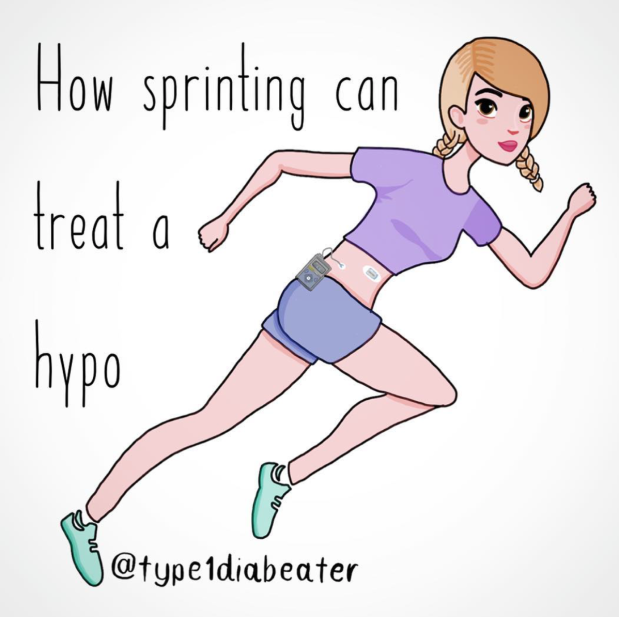
More often than not, I treat a hypo during my long runs by including a series of 10 second sprints into my run – usually 4 with short rests in between.
Of course, I ALWAYS carry some form of glucose when I run and this is always the recommended treatment of a hypo. In addition, as individuals with differing ages, sex and fitness levels we all have our own responses to these types of activities and should seek advice from a healthcare professional before undertaking such an experiment.
Nevertheless, I thought I’d explain some of the science behind how sprinting can raise your blood glucose (BG) level in the absence of glucose – and how, as a diabetic, I use that to my advantage to lift myself out of a hypo.
Essentially, the rise in BG you incur during sprinting (a high-intensity anaerobic activity) is due to a build up of lactate.
There are a number of factors that account for this, but the two I’ll explain here are:
1. The removal of lactate.
Sprinting produces adrenaline which in turn causes a decrease in the clearance of lactate from exercising muscles.
2. The type of muscle fibres involved.
Fast twitch fibres have been found to increase in numbers with intense sprinting training – and these fibres are more suited to the production of lactate.
So, sprints are more prone to lactate accumulation than endurance runs… and when there is increased availability of lactate during intense exercise, this can be re-used as an alternative fuel source for the heart, skeletal muscles and the brain – decreasing the need for glucose.
On top of this, lactate can also be used by the liver to create new glucose.
As a result, blood glucose rises!
Love it! I’ve done the same. I always plan to carry glucose, but my confidence is increased knowing (and having tested) that this works for me as well.
LikeLiked by 1 person
Cool beans !!!!
LikeLike